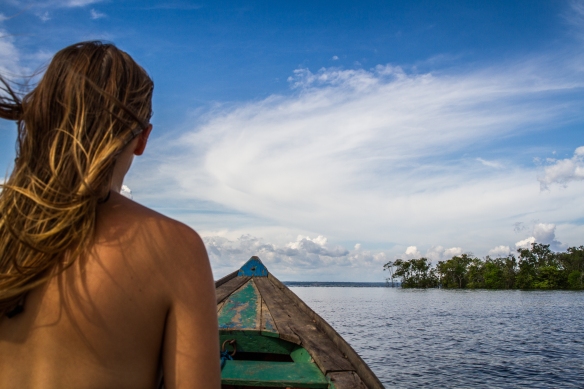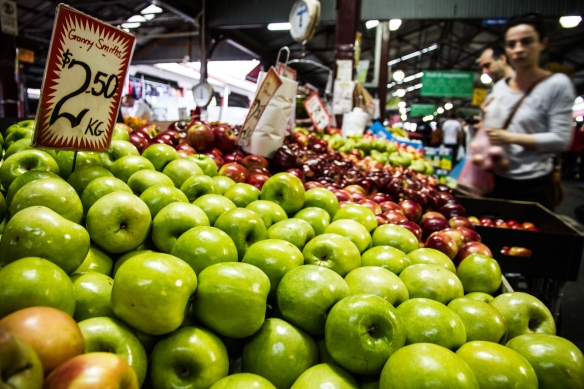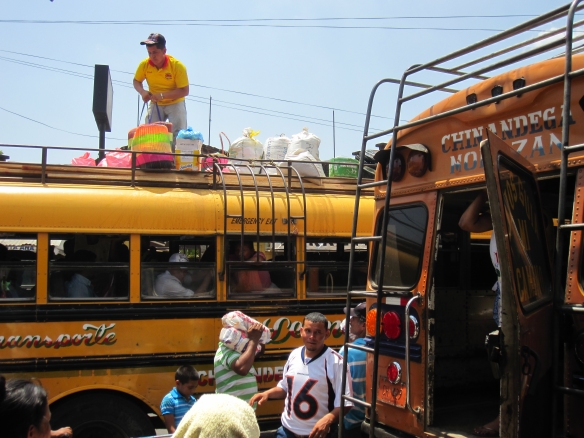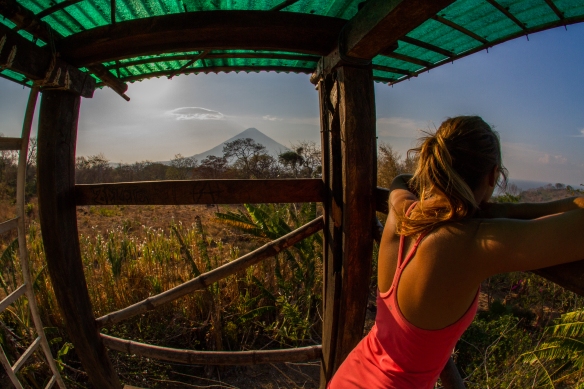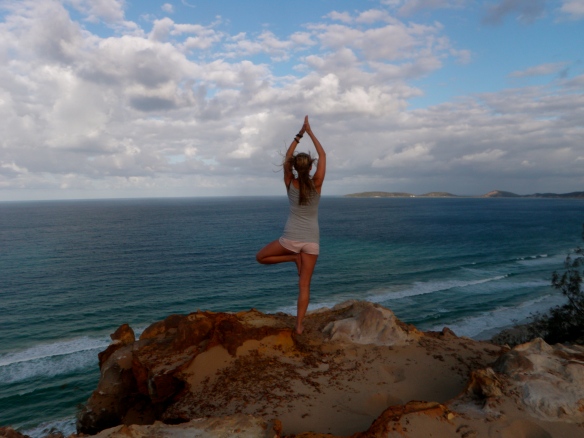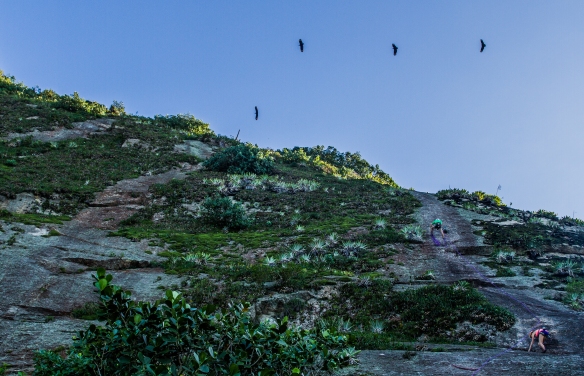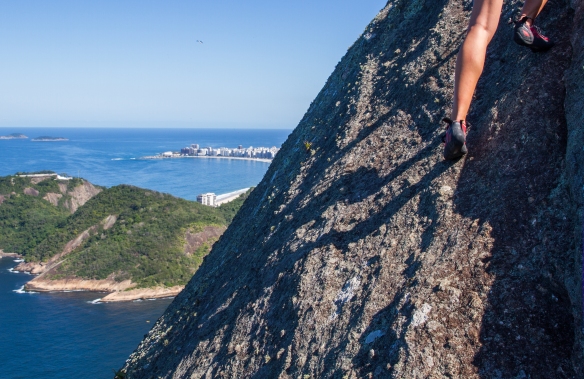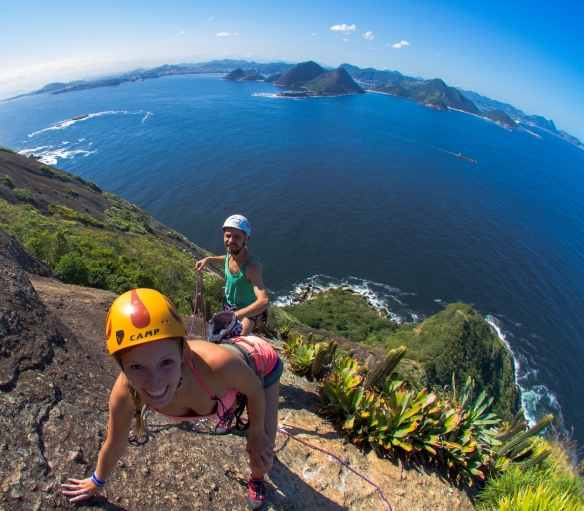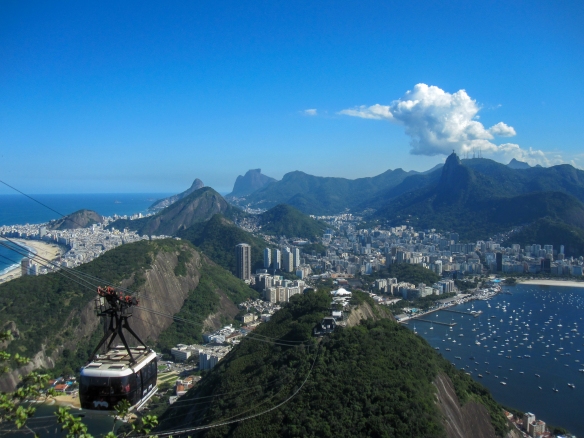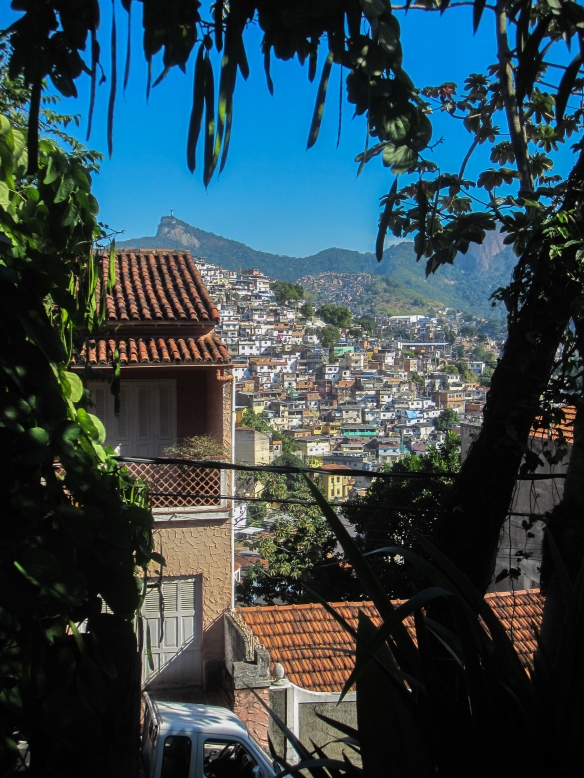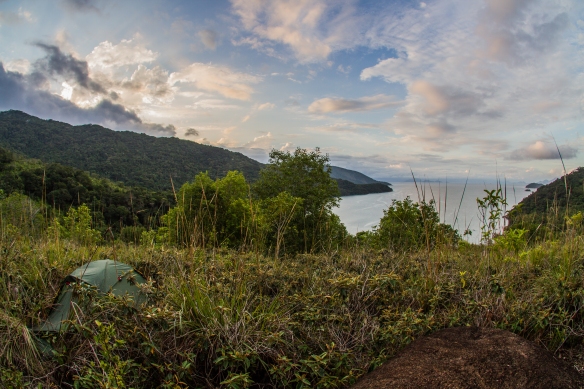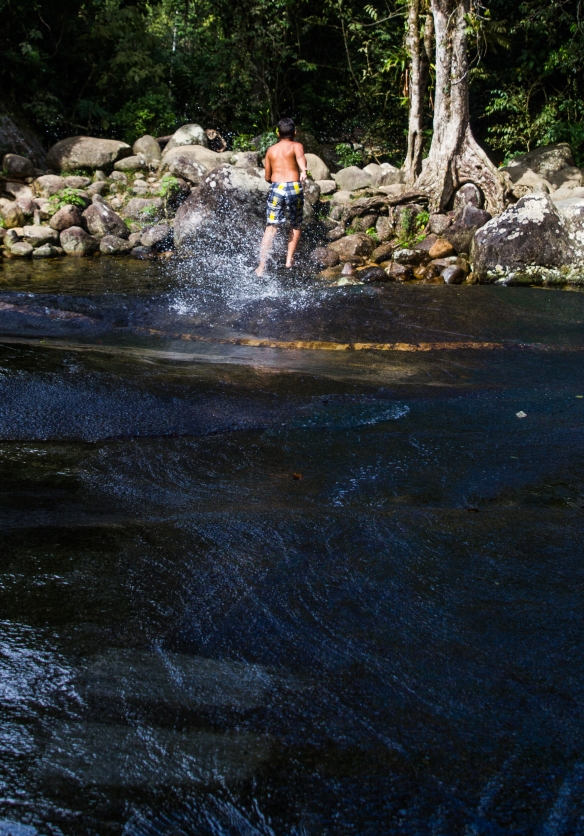Well, it’s been a long period of silence, but that’s not to say the mental writing wheels haven’t been turning. I’ve been (slowly) building something new, and I’m not too terribly far way from getting the new website and blog up and running. Soon, everything will be moved over to a more permanent home. I will let you know where to come and find me when we’re all moved in!
Embrace
It’s a natural thing, surely. People find comfort in familiarity. It’s normal to miss your favourite things, if you can’t get your hands on them wherever you are. But isn’t that part of the point of travelling, of living abroad?
People hear about Banff around the world and, when young adventurers get an opportunity to travel or work in Canada, it is a popular destination for them to choose. Banff is full of people from across Canada, Australia, New Zealand, the UK, Germany, the Philippines, and countless other countries.
They (and I) have come to Banff, to this part of Canada, to experience life in the mountains, to get amongst the culture, to live a certain kind of lifestyle. Yet so often I hear about what’s missing rather than what’s here.
The cheese sucks, groceries are expensive, the fries are different, TV is worse … Often the exact same complaints I heard from North Americans in Australia. Surely the fries can’t be worse in both countries at the same time. It’s just different. And that’s the point. You wouldn’t have wanted to come here if it was the same as wherever it was that you just left.
I’m not, by any means, saying I’m immune to this trend. I have most certainly wanted for things, and verbalised this, on my travels. I’ve complained about Australian TV commercials, about Costa Rican cheese. Yet I have noticed the tendency to do this, in myself at least, diminishes with a greater leap in cultural differences.
It can be easier to compare and then – often – to criticise, when two worlds are, in so many ways, similar. For Australians in Canada, or vice versa, things can look very much the same. We speak the same language, have similar socioeconomics, and are, in the grand scheme of things, young Commonwealth countries. Then, when the cheese and the fries are different, it seems to have some real significance.
Travelling El Salvador, or Morocco, or Vietnam, one expects everything to be different and is, I believe, more willing to embrace that. You’re not expecting the comforts of home, so you’re not as bothered when they aren’t there. You respect that this is a completely different culture, and you are there to explore it.
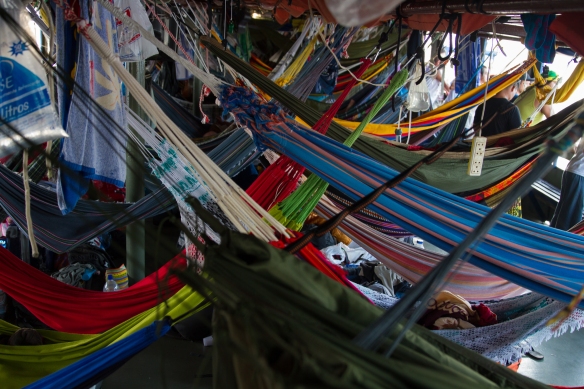
That’s not to say I haven’t heard complaints about the food, the transit, the relaxed view of time, or that I haven’t struggled with these things myself at times, but it’s less of a narrative.
So here’s the challenge. Wherever you are from, and wherever you may be going, whether it’s a different province, state, country, or continent … embrace. Embrace the people, the culture, the food and the drinks, the language, the traditions, even the weather. You’ve gone exploring for a reason, to see things and do things that are different. So when you get to somewhere and it is different, be thrilled that you found what you were looking for.
Set Up
It feels like it’s been a whirlwind couple of months. After Brazil, I returned to Canada while Tim extended his holiday for a few more weeks to meet up with some friends in Europe who were trotting around with a tiny house towed behind a car.
It worked out quite well in my favour that flights from Rio to Canada were significantly cheaper to Toronto than to my hometown in Saskatchewan, so I could easily justify adding on a mini-holiday in Toronto to visit one of my best friends who I hadn’t seen in over two years.
I hadn’t been to Toronto since I was about 13 years old, and I wasn’t sure what to expect from the city – I’ll admit my expectations weren’t high. Though smoggy and a bit clogged up with traffic, Toronto had a much more interesting feel than I expected, and I thoroughly enjoyed spending a few days catching up with old friends (one who had made the trip to Vancouver to reconnect) and exploring interesting corners of the city, browsing in great markets, and fulfilling all of the cravings for food I’d been having that were either too expensive or simply non-existent in Latin America (think, mainly, Brie and sushi).
Coming in to Toronto and catching up with some of nearest and dearest was the best way to return. It helped me ease into the idea of being back in Canada, helped enormously by generous quantities of wine and girly movies. Too soon, it was time to end the reunion and continue on my journey “home.”
Home is home because I grew up there and my parents are there. But I won’t be moving back there and the ties that bind slowly fade, as more people adopt new lives and move away. One day, not right now, I’m sure I’ll have to figure out a new place to label home.
As I flew over the checkered fields of the Canadian prairies I realised, once again – as one often does after stints like these away – how beautiful home really is. Saskatchewan is known as Land of the Living Skies and for good reason. I’ve never seen a sunset, anywhere in the world, that rival those from home. The area is simply vast. The flat, and occasionally rolling, prairies stretch for hundreds of miles, and it is far off into the distance before land meets sky. My dad tells a joke about a prairie native complaining about the view in the Rockies – the mountains block the views. And it is true, in a sense, for those of us who are used to endless sky and being able to see distances too far to run. I believe this is why I am now drawn so much to the ocean – you get the same expansive view, the sense of endlessness, the feeling of freedom.
After a lovely month or so of catching up with friends and family, doing life admin tasks such as buying a car, getting a job, and such, TIm joined me in Canada and we quickly set off towards Banff where life in Canada was to truly begin.
As the Rocky Mountains rose up to us in the distance, I tried to envision how and explorer would feel, having reached this part of the country – having had smooth and flat travels for thousands of kilometres, and then seeing the mass of cold stone rising in the distance, thickly forested and seemingly impassable. It would not have been a good day.
We stayed in Canmore, which is about an hour west of Calgary and twenty or thirty minutes outside of Banff, for about a week. My mom has an incredibly generous friend who let us stay at the condo they own in Canmore while we sorted out where we were living. Banff, and Canmore, I had been told – repeatedly – were incredible tricky places to find somewhere to live. The vacancy rate is approximately 0%, and we certainly viewed a few duds before finding a great condo to move into, which we share with three girls from Australia.
Arriving in Banff after the summer season helped – it is such a transient town, and summer is much busier than winter. Many people were leaving as we arrived, at the beginning of “shoulder season,” which worked out rather luckily, rather than something we planned. I would certainly recommend this strategy for anyone planning on turning up in a tourist town any time soon.
And here we are, settling into Banff and enjoying all that mountain has to offer before our world becomes blanketed in snow. Busy, busy, will try to keep the words flowing!
Coming Home
I am touching down on Canadian soil after one year, nine months, and two days away. It’s a different person arriving today, really, than the one that left almost two years ago.
I haven’t cut or coloured my hair in almost a year, and I’m still living out of the same 60 litre backpack that I left with, though its contents have shifted a bit. My feet spent more time aching from long shifts at the bar, or overnight hikes in soggy trail runners, than from dancing into the wee hours in 4-inch stilettos. A lot has changed. And that’s just the surface.
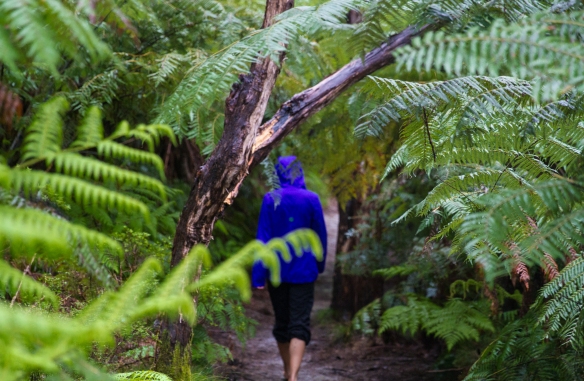 Since leaving home after high school, I have moved 17 times to 7 cities in 3 countries. For my university years, four months was the standard length of time to spend anywhere. After a year in Calgary in the same apartment, I responded to my itch to move in a big way and haven’t look back since. For a long time, this transience has been the only real constant.
Since leaving home after high school, I have moved 17 times to 7 cities in 3 countries. For my university years, four months was the standard length of time to spend anywhere. After a year in Calgary in the same apartment, I responded to my itch to move in a big way and haven’t look back since. For a long time, this transience has been the only real constant.
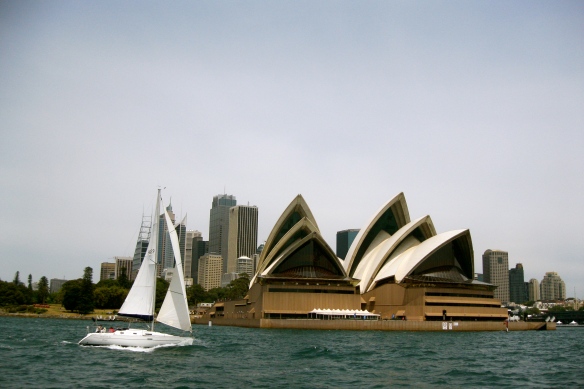 My first year was spent in Australia on a Working Holiday Visa; three months travelling, three months working in a tiny beach town in Queensland, and six months working truly excessive hours yet still managing to love life in Sydney.
My first year was spent in Australia on a Working Holiday Visa; three months travelling, three months working in a tiny beach town in Queensland, and six months working truly excessive hours yet still managing to love life in Sydney.
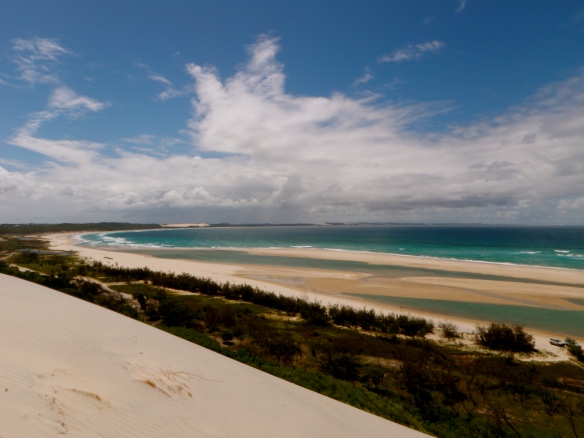 During my year in Australia, I flitted between easy travel, working in a laid back beach town, splashing out on expensive sailing trips, and then buckling down for six months to somehow earn enough to travel for ten. Of course, I learned. Tangible things: how to bartend, SCUBA dive, repack a backpack in record time. And then the other stuff. I either learnt how or tapped into my ability to work extremely hard to reach a goal. I learned how to listen to my body after an injury when it was telling me I needed a break.
During my year in Australia, I flitted between easy travel, working in a laid back beach town, splashing out on expensive sailing trips, and then buckling down for six months to somehow earn enough to travel for ten. Of course, I learned. Tangible things: how to bartend, SCUBA dive, repack a backpack in record time. And then the other stuff. I either learnt how or tapped into my ability to work extremely hard to reach a goal. I learned how to listen to my body after an injury when it was telling me I needed a break.
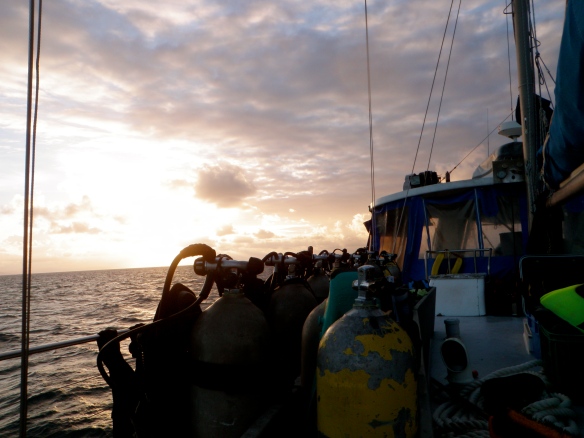 In those first few months in Australia, I met Tim. We’d gone our separate ways for a while, as we both had plans and adventures and things that needed to happen. In April, we both returned to Sydney and we jumped right in. Moving in with someone I’d spent about two weeks with was a decision that the freedom of travel allowed me to make. It would have been very easy to both think we should take it slower, or that things could go wrong, or that it was a bit crazy, but we did it anyway. I felt free to make the decision for a number of reasons. I didn’t have a network of friends on the ground who, for better or worse, would judge it. I was literally lightweight enough to move out at a moment’s notice if it all turned sour. We took a chance, because we could, and we wanted to. And it worked.
In those first few months in Australia, I met Tim. We’d gone our separate ways for a while, as we both had plans and adventures and things that needed to happen. In April, we both returned to Sydney and we jumped right in. Moving in with someone I’d spent about two weeks with was a decision that the freedom of travel allowed me to make. It would have been very easy to both think we should take it slower, or that things could go wrong, or that it was a bit crazy, but we did it anyway. I felt free to make the decision for a number of reasons. I didn’t have a network of friends on the ground who, for better or worse, would judge it. I was literally lightweight enough to move out at a moment’s notice if it all turned sour. We took a chance, because we could, and we wanted to. And it worked.
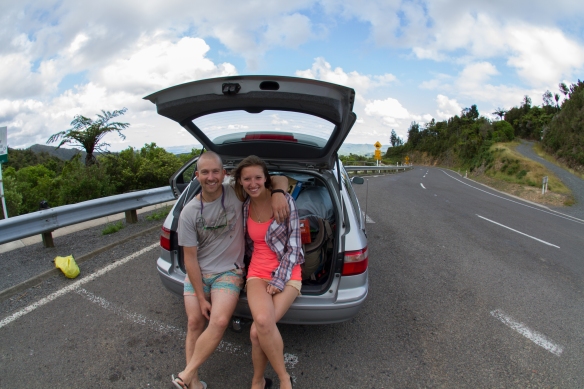 Those six months in Sydney were some of the fullest of my life – literally and metaphorically. I was incredible busy, routinely working 50 – 60 hour weeks which included 5:30 a.m. starts and 1 a.m. finishes. And I still managing to squeeze in weekend trips and after-work activities. Tim and I grew incredible close incredible quickly, and I developed fast and strong bonds with a number of people I know I’ll be lucky enough to know for years to come. Tim and his friends introduced me to an entire world of activities I had never even considered. Where, in the past, I would have spent my time with friends out at martini nights, shopping, at a cottage for a weekend, having moving nights, dancing at clubs, drinking sangria on rooftops … Now my weekends were full of rock climbing, hiking, and canyoning trips. I was surprised by how much I enjoyed this undiscovered life.
Those six months in Sydney were some of the fullest of my life – literally and metaphorically. I was incredible busy, routinely working 50 – 60 hour weeks which included 5:30 a.m. starts and 1 a.m. finishes. And I still managing to squeeze in weekend trips and after-work activities. Tim and I grew incredible close incredible quickly, and I developed fast and strong bonds with a number of people I know I’ll be lucky enough to know for years to come. Tim and his friends introduced me to an entire world of activities I had never even considered. Where, in the past, I would have spent my time with friends out at martini nights, shopping, at a cottage for a weekend, having moving nights, dancing at clubs, drinking sangria on rooftops … Now my weekends were full of rock climbing, hiking, and canyoning trips. I was surprised by how much I enjoyed this undiscovered life.
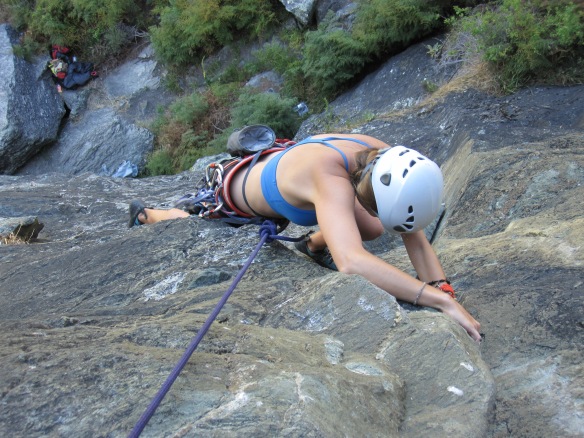 In October, a year after I had arrived in Australia, the real adventure began. I would be travelling for the next nine or ten months. My family visited for a month, and we had an amazing time exploring Australia and New Zealand.
In October, a year after I had arrived in Australia, the real adventure began. I would be travelling for the next nine or ten months. My family visited for a month, and we had an amazing time exploring Australia and New Zealand.
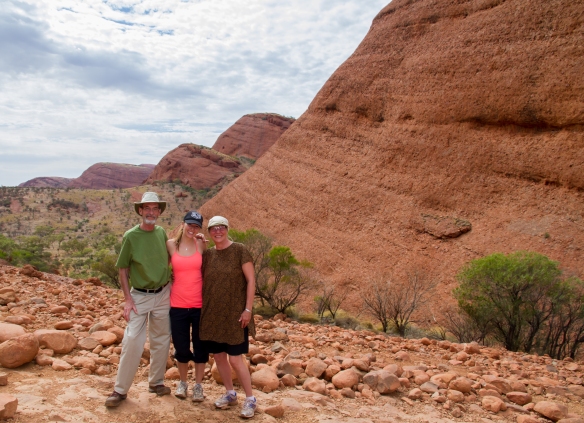 I returned to Sydney for a bit of relaxation and a lot of packing, and then Tim and I were off for a jam-packed month of adventure in New Zealand, culminating with an absolutely amazing family Christmas in Auckland.
I returned to Sydney for a bit of relaxation and a lot of packing, and then Tim and I were off for a jam-packed month of adventure in New Zealand, culminating with an absolutely amazing family Christmas in Auckland.
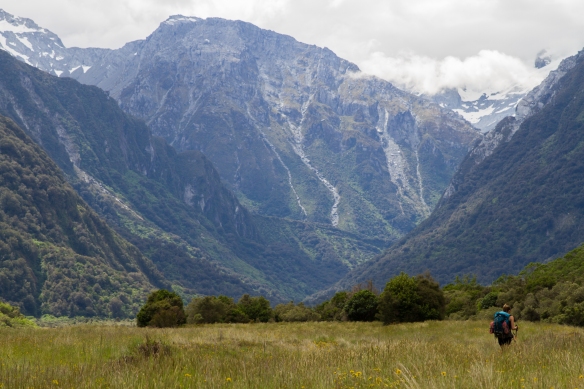 We were in Mexico in time for New Year’s Eve, and we spent the next six and half months travelling south, hitting every country in Central America, with a finale in Brazil during the World Cup.
We were in Mexico in time for New Year’s Eve, and we spent the next six and half months travelling south, hitting every country in Central America, with a finale in Brazil during the World Cup.
 Saying it’s been an amazing trip, and incredible experience, a once-in-a-lifetime adventure doesn’t capture it. We saw things that surely must rival the beauty of anywhere in the world. We’ve done some of the most amazing things I could ever hope to do. Yet I know we will still be having such adventures for the rest of our lives.
Saying it’s been an amazing trip, and incredible experience, a once-in-a-lifetime adventure doesn’t capture it. We saw things that surely must rival the beauty of anywhere in the world. We’ve done some of the most amazing things I could ever hope to do. Yet I know we will still be having such adventures for the rest of our lives.
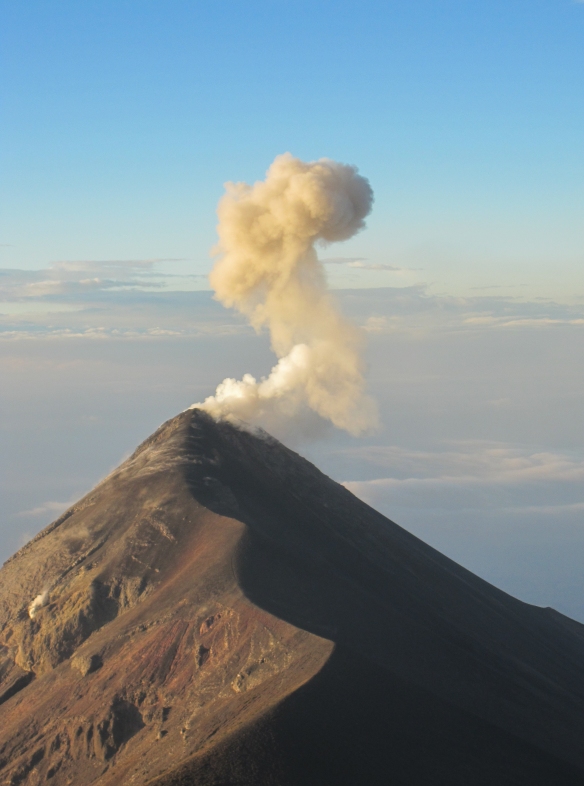 And now, I’m not sure I’m ready to go home.
And now, I’m not sure I’m ready to go home.
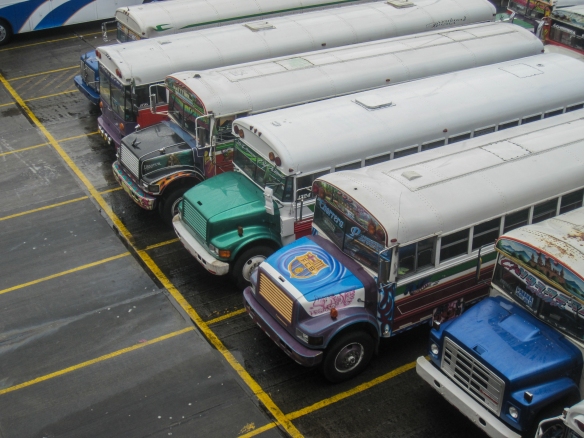 I’m beyond excited to see my friends and family. I’m excited to be in a land that is familiar. To know how to ask for what I want. To understand, and to be able to communicate. I’m excited for hot showers, good cheese, and nice pillows. But I also know I will get my fill of all of those comforts very quickly.
I’m beyond excited to see my friends and family. I’m excited to be in a land that is familiar. To know how to ask for what I want. To understand, and to be able to communicate. I’m excited for hot showers, good cheese, and nice pillows. But I also know I will get my fill of all of those comforts very quickly.
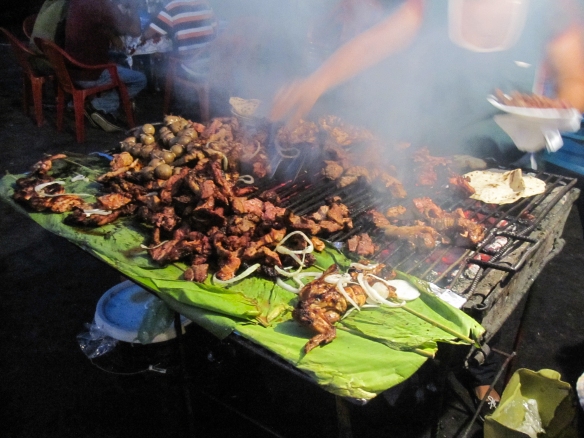 We are going to Canada, as it somehow seemed to become the place to go. Tim can get a visa and is excited at the prospect of work on a mountain. I’m meant to be putting in some career time – I’m sick of traveller jobs and want something more challenging, fulfilling. But now I’m not so sure. I had a moment, on my last flight, when it was taking off from Panama and jetting me to Toronto, when all I could think was, “Leave me here.”
We are going to Canada, as it somehow seemed to become the place to go. Tim can get a visa and is excited at the prospect of work on a mountain. I’m meant to be putting in some career time – I’m sick of traveller jobs and want something more challenging, fulfilling. But now I’m not so sure. I had a moment, on my last flight, when it was taking off from Panama and jetting me to Toronto, when all I could think was, “Leave me here.”
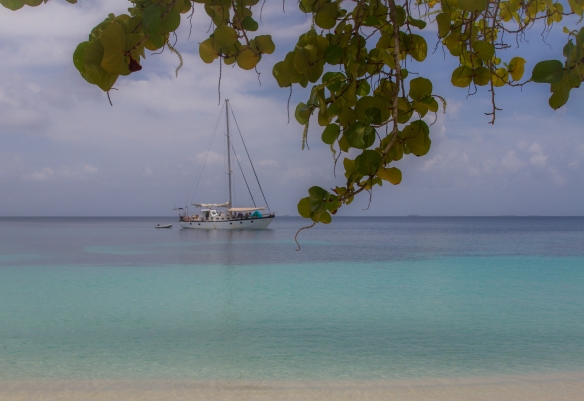 It’s not travelling that’s the hard part, it’s stopping. So the only way to survive the transition back to what many of us refer to as “the real world” is to think about it was the next great adventure. Have I lived in this place, worked at this job, known these people? This is what we, with our restless feet and our packed bags, must remember. We are always on the next part of our adventure.
It’s not travelling that’s the hard part, it’s stopping. So the only way to survive the transition back to what many of us refer to as “the real world” is to think about it was the next great adventure. Have I lived in this place, worked at this job, known these people? This is what we, with our restless feet and our packed bags, must remember. We are always on the next part of our adventure.
Climbing Sugarloaf
Rio is a rock climber’s dream. From any vantage point in the city, countless sheer rock faces beckon, rising up from favelas and suburbs, adding a jagged edge to Rio’s beauty.
I would hesitate to call myself a climber. More accurately, I do a bit of climbing. I was only introduced to the sport a little over a year ago, and for half the time since then I have been travelling and have hardly touched a rock.
But here we were, in the city that offers probably the best urban climbing in the world. When we found out this includes the iconic Sugarloaf Mountain, we were chomping at the bit to do it. You know Sugarloaf (Pão de Açúcar in Portuguese). It’s that round, kind of pointy mountain that’s featured in nearly every photo of Rio.
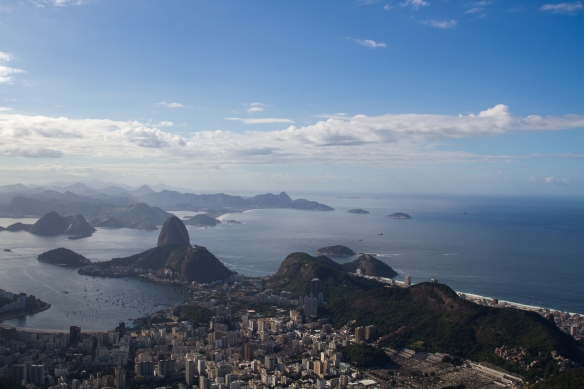 Sugarloaf gets its name – are you ready for it? – from a sugarloaf. The shape which refined sugar was traditionally formed into. Like this. Not far off, I reckon.
Sugarloaf gets its name – are you ready for it? – from a sugarloaf. The shape which refined sugar was traditionally formed into. Like this. Not far off, I reckon.
Sugarloaf (the mountain) is easily accessible by cable car (official Bondinho website here). One car connects ground level to the top of Urca (which you can also walk to), and then a second car takes you all the way to the top of Sugarloaf. This method will cost you R$62 (about $30). And will be way less fun.
As we weren’t carting around the 20 kilo or so of climbing gear that would be necessary to haul our butts up the mountain, and also had no sweet clue where we were going, we decided to splurge and hire a guide. The opportunity to do the climb was too good to be missed.
After much googling, emailing, and researching, we opted for the crew at Climb in Rio to take us on our adventure. They let us know that Climb in Rio and Ancorauê Climbing are in the process of merging, so they are, for our purposes, the same.
Prices for a handful of different companies were pretty comparable, and Andrew at Climb in Rio got back to us quickly, answered all of our questions, was very professional, and chatted about the climb that would best suit our abilities.
Though most companies offer climbs all over Rio, we wanted to summit Sugarloaf, so that was the mountain we were focusing on. With over 50 routes on all sides of Sugarloaf, ranging from a North American 5.4 to 5.13a (and between 2 and 12 pitches long), Sugarloaf basically has something to offer to every climber. Canada’s Mountain Equipment Co-op (MEC) has a useful climbing grade conversion chart here.
Italianos is one of the most famous routes on Sugarloaf, a 5.9 multipitch. Due to the fact that we hadn’t climbed in a while, and at best I would probably consistently climb at 5.10a on a good day, we opted to go with Andrew’s other suggestion, a 5.8 multipitch on the west face called Coringa, that included some unprotected hiking and scrambling, and then a handful of short 5.7 pitches to the top. Climb in Rio’s price for two people climbing with one guide for a half-day was R$600 total (around $300). This includes all equipment.
We waited a few days for the rock to dry off and then met Andrew and our guide, Eduardo, at the base of Sugarloaf at 8 a.m. After doing a quick gear sort, trying on shoes and harnesses, and loading up our packs, we were off.
We hiked the easy path up the base of Urca and, where it ended, jumped over the barrier and continued around the side of the mountain. After 10 minutes or so, we reached the beginning of our first pitch. Eduardo led the climb, I followed, and Tim picked up the rear, cleaning the wall of carabiners as he went.
It had been awhile. Sugarloaf lends itself to balance, good footwork, and small movements. It was very different from most of what I’d been on before. It took some getting used to.
I had a rush go through me as I began to scale the wall. Despite being rusty, it was something akin to riding a bike: these movements were familiar. The rock felt trustworthy beneath my hands. I was doing it, getting closer and closer to where Eduardo had leashed himself to the wall at the belay station. At one point, I got stuck underneath a ledge, running my hands over the bumpy but smooth surface above me. There was nothing to hold on to. I knew what I needed to do but it wasn’t until Eduardo yelled, “Move your feet!” down at me that I mustered up the courage to simply try to walk up the wall, moving my feet bit by bit, and using my hands only to balance – there was nothing to grip.
Finally, I reached Eduardo and anchored myself, slightly awkwardly to the wall. When Tim reached us (much more quickly than I), we were crammed together around a single bolt. Eduardo took off again and, despite the fact that this pitch was harder, it came more easily. The rust was coming off.
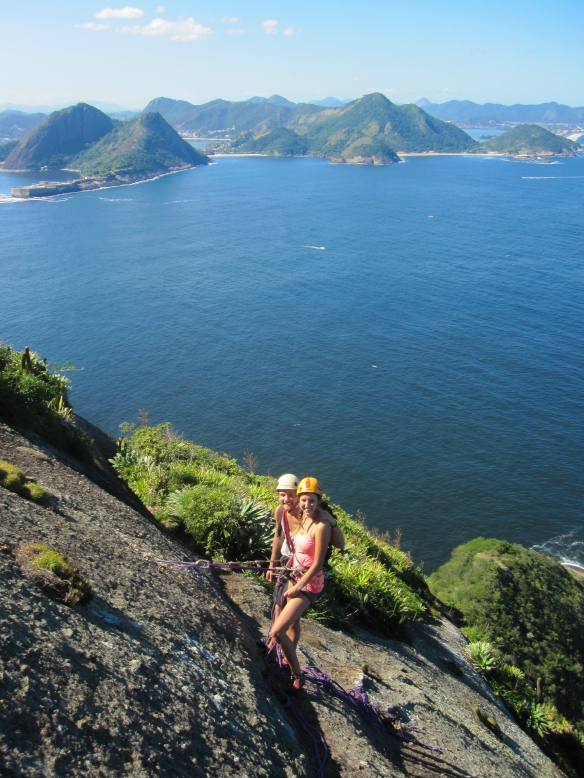 We alternated between climbing and, thankfully for our aching feet, donning our running shoes to do a bit of walking/scrambling/crawling.
We alternated between climbing and, thankfully for our aching feet, donning our running shoes to do a bit of walking/scrambling/crawling.
Not the least bit afraid while attached to the rope, as soon as I was asked to walk across some unprotected (and often slippery) stretches of rock, with a steep drop my only fate if I were to slip, I became a bit useless. I trust my feet a lot better if my hands are on the ground, and so that was the method I went with.
On one of the final pitches, there wasn’t an established belay station, so Eduardo belayed us by just sitting on the ground and digging his heels in. “On this pitch,” he informed us, “It is best if you do not fall.” Considering that our very talented guide had free soloed a handful of the last pitches, we figured we could at least get up it without taking a bit fall.
Despite having chosen one of the easier options, the day was still exhausting. It was a triumphant but tired pair that finished the final pitch, with incredible views of the beaches and the ocean surrounding Rio. We consolidated our gear and hiked the rest of the way to the top. As we ducked under the guard rails, sweaty and carting a lot of rope, we got some funny looks from the well-dressed and very clean tourists that had arrived on the cable car.
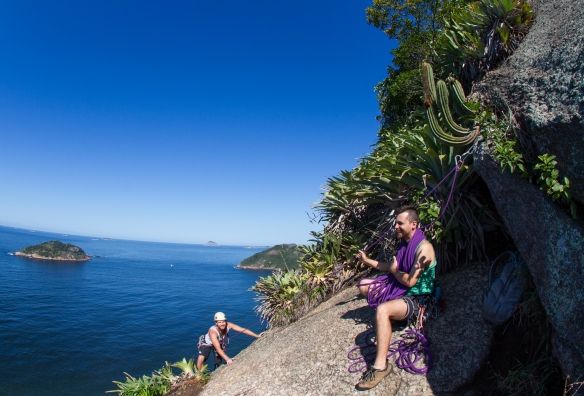 We hardly cared. Literally grinning ear-to-ear from our accomplishment, we took a few minutes to enjoy the views from the top before riding down on the cable car (which is offered free to any hikers or climbers who need a ride down).
We hardly cared. Literally grinning ear-to-ear from our accomplishment, we took a few minutes to enjoy the views from the top before riding down on the cable car (which is offered free to any hikers or climbers who need a ride down).
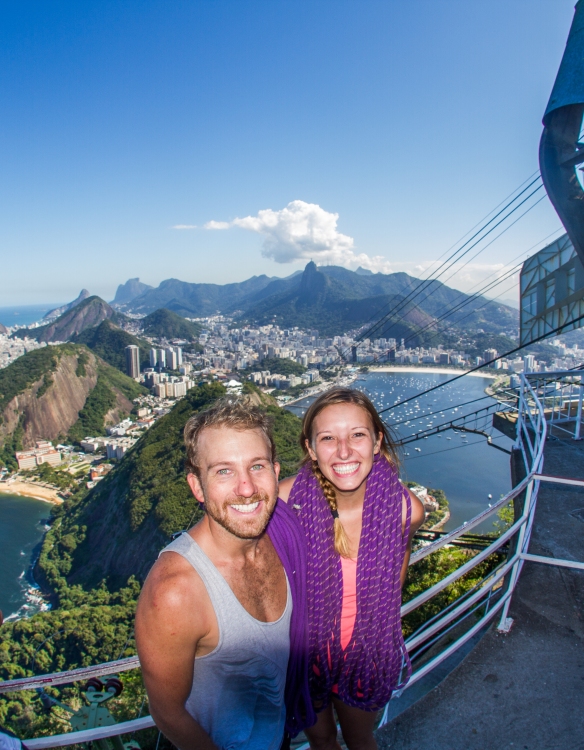 Eduardo was an excellent guide. I felt perfectly comfortable with his ability, he never rushed us during the climb, and he offered an interesting insight into carioca culture. He even showed us to one of his favourite restaurants after the climb after our request for lots of cheap food. Thanks to Eduardo and Climb in Rio for a truly epic day!
Eduardo was an excellent guide. I felt perfectly comfortable with his ability, he never rushed us during the climb, and he offered an interesting insight into carioca culture. He even showed us to one of his favourite restaurants after the climb after our request for lots of cheap food. Thanks to Eduardo and Climb in Rio for a truly epic day!
One of the absolute highlights of Rio, Brazil, hell – even the entire trip, this climb was a thrilling experience, a unique way to visit an established landmark, and a fantastic way to finish off our big trip.
How to Visit Corcovado and Christ the Redeemer
As one of the most-visited sites in Rio, it should be reasonably straightforward. However, you can avoid a lot of confusion and a lot of standing in line by knowing a couple of key things about visiting Christ the Redeemer on Corcovado Mountain in Rio.
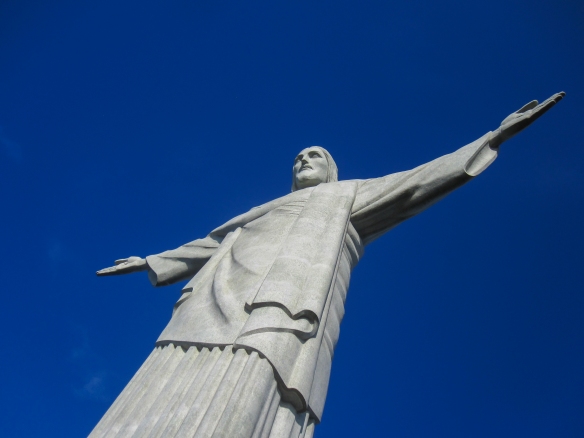 First of all, I know you are going to see the statue, not the mountain, but most tours, transport, and shuttles will list Corcovado, so if you see that, that is where you want to go. Second of all, make sure you keep an eye on the weather. There is no point in visiting the statue on a cloudy day, and the weather in Rio can be quite volatile. The transport companies will not inform you (until you are already halfway up, and have already paid) if the visibility is good or not, so it is your responsibility to judge it.
First of all, I know you are going to see the statue, not the mountain, but most tours, transport, and shuttles will list Corcovado, so if you see that, that is where you want to go. Second of all, make sure you keep an eye on the weather. There is no point in visiting the statue on a cloudy day, and the weather in Rio can be quite volatile. The transport companies will not inform you (until you are already halfway up, and have already paid) if the visibility is good or not, so it is your responsibility to judge it.
Here are your options:
1. Train. The official Corcovado train leaves from Cosme Velho. You can take several buses (or a taxi) to get to this point. The 583 from Copacabana or Ipanema, the 422, 498, 569 or 583 from Largo do Machado. The train costs R$50 round trip and includes admission to the monument. It is possible to buy your tickets online ahead of time here for R$55 which allows you to pick a train time and skip the queues. When we attempted the train option, we arrived at around 7:30 a.m., stood in line for an hour, and were informed the next available train wouldn’t be departing until 11 a.m. Granted, we were there in the midst of the World Cup, but the monument is almost always busy, and $2.50 is worth a few hours of free time in Rio, in my opinion. If you don’t buy ahead, just go early.
2. Direct Van. This was the option we ended up taking after we gave up on the train option. You can take a van directly from either Copacabana or Largo do Machado to the top of Corcovado. The cost is R$49 round trip during high season (and you save the bus fare as well). It is also possible to book tickets and a time slot online, giving you the ability to skip the queue (they won’t make this obvious, you kind of just have to butt the line and show your voucher. Website here.
3. Van From Cosme Velho. While waiting in line for the train at Cosme Velho, you will likely be approached by private van drivers offering to take you up, and telling you the wait for the train will be hours. They may not actually be feeding you lines, as in our case it was perfectly true. This van ends up costing about the same as the other options, but you do have to wait in a second queue at Paineiras, about halfway up, which could (or could not) negate any time savings.
5. Hike. This Trip Advisor entry gives great details on the hike up to entry of Corcovado. There is still an entry fee at the top. I have heard that there are relatively frequent robberies on this trail, but that weekends do have stationed guards. Do some research on the current situation before you choose this option.
All in all, despite the hordes of tourists you will be doing it with, Christ the Redeemer is an iconic site, offering unparalleled views of the city, and I’m happy we took the time out of our day and the money our of our pockets to make the trip up Corcovado.
Rio. And the End of the World Cup
AKA: The All Best Finale for a Trip of All Time
Somehow our humble plans of a couple of weeks in Manaus had transformed with us ending up here: in Rio de Janeiro for the World Cup final. I had a hard time seeing how life could get any better.
Let me clarify that when I say “for” I mean “in the city for” not “at the stadium for”. We had about five days in what has to be one of the most beautiful, iconic, and captivating cities in the world. I have a well-travelled friend whose favourite city in the world is Tel Aviv. Or it was, that is, until she came to Rio. It didn’t take a day for Rio to take over the number one spot in her mind.
We were here, in reality, only because of her. We had met Brit, a fellow Saskatcheawnian (I’m not kidding about that, by the way. Person from Saskatchewan. Anyways.) on the boat from Colombia to Manaus. After being hammock neighbours and bumping hips for four days, we became quite close. She and her boyfriend had booked a place in Rio for a handful of days overlapping the World Cup final which, luckily for us, had some floor space. Suddenly the ridiculously expensive city, where hostels were charging upwards of $150 for a night in a dorm bed during World Cup, became a lot more reasonable. How we could not go?
So go we did. We arrived on the 11th of July. The third place match was the following day and the final the day after that. Without functioning phones, it made the logistics of meeting up a little bit harder, so we ended up having a few drinks in a pub just down from their place, hanging out around an outdoor table, with the hope that we’d just run into each other. And, after the little paper they kept track of our beers on told us that we’d been there awhile, we did! Rio was falling into place.
The place was great, a decent-sized apartment in Flamengo, which was close to most of what we needed, and accessible to transit for everything else. Tim and I headed off to see the Escadaria Selarón, or the Selaron Steps, in Lapa. The steps are brilliant, and I’d only recommend trying to go at a slightly less busy time (as in, not World Cup or Carnaval or New Year’s) to see them in their full glory as, of course, they were covered in people.
The steps, created by Chilean artist Jorge Selarón, consist of 250 steps decorated with over 2000 tiles, many of which were donated from people around the world. It took Selarón twenty years to complete the project. The result is a beautiful, glorious, mosaic-like staircase, where one can often successfully find tiles from their country or somewhere they have strong connections. It’s fantastic. It reminds me of something you’d find in Spain, maybe residing comfortably in Gaudí’s Park Güell.
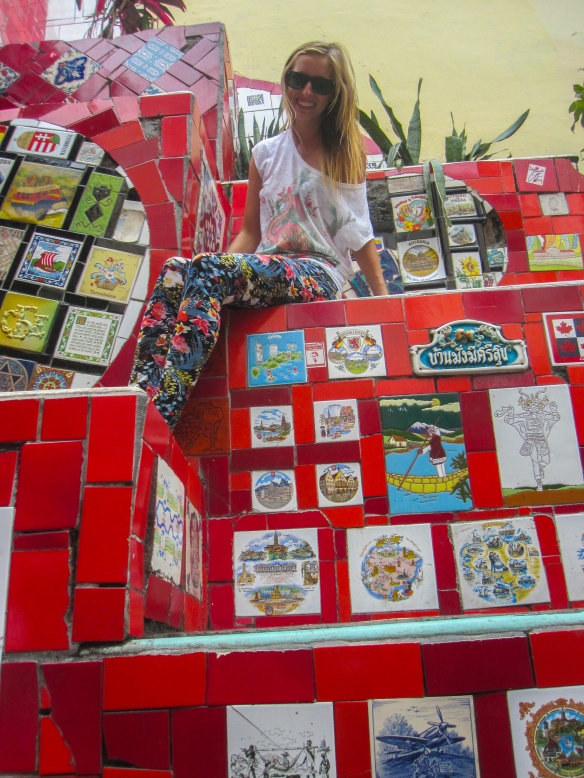 While we were scaling staircases, the rest of our team had gone to Sugarloaf, the iconic rounded mountain in Rio, accessible by cable car. We had discovered it was, in fact, possible to rock climb Sugarloaf. Drawn to the general epic-ness of this option, we picked it. Our climb had been rescheduled to the 15th, Tim’s last day in Rio, due to some rain.
While we were scaling staircases, the rest of our team had gone to Sugarloaf, the iconic rounded mountain in Rio, accessible by cable car. We had discovered it was, in fact, possible to rock climb Sugarloaf. Drawn to the general epic-ness of this option, we picked it. Our climb had been rescheduled to the 15th, Tim’s last day in Rio, due to some rain.
That afternoon we headed out with the masses to the FIFA Fan Fest on Copacabana Beach for the third place match, Brazil vs. The Netherlands. We planned to meet the team at the entrance, but they had gotten held up at Sugarloaf (they reckoned they probably spent about five hours in line that day) and didn’t make it. We followed the thousands of people streaming into the gates and prepared for the match.
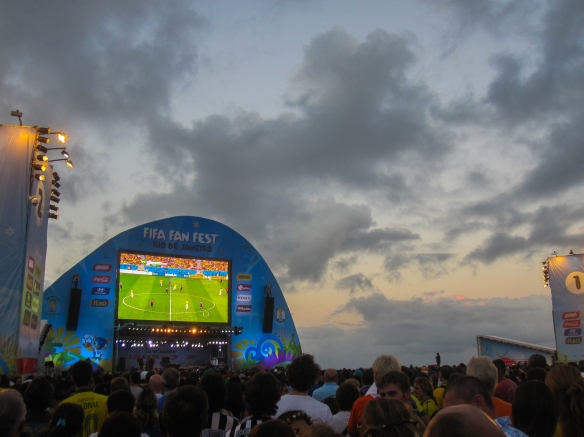 Again, for those of you who know what happened, you know that things didn’t turn out well for Brazil. The Netherlands took the third place match 3-0. The crowd was less than enthralled for the entire match, which can only be expected after Brazil’s recent performance. Still, for a moment, I missed the square in Manaus which would, undoubtably, be packed full of fans sweating in the sweltering heat. Everyone from kids and families to groups of teens to old couples would be out. And they would all be watching the game, figuratively or literally biting their nails. Copacabana definitely had a higher ratio of teenage girls on smartphones, there to be there, to see, to be seen. After the match, we met up with the rest of the crew for a couple of drinks and then moseyed on home.
Again, for those of you who know what happened, you know that things didn’t turn out well for Brazil. The Netherlands took the third place match 3-0. The crowd was less than enthralled for the entire match, which can only be expected after Brazil’s recent performance. Still, for a moment, I missed the square in Manaus which would, undoubtably, be packed full of fans sweating in the sweltering heat. Everyone from kids and families to groups of teens to old couples would be out. And they would all be watching the game, figuratively or literally biting their nails. Copacabana definitely had a higher ratio of teenage girls on smartphones, there to be there, to see, to be seen. After the match, we met up with the rest of the crew for a couple of drinks and then moseyed on home.
The next morning, we woke up early with intent to beat the crowds at Christ the Redeemer, perhaps Rio’s most famous landmark. The statue is situated at the top of Corcovado mountain, and buses or trips will mention Corcovado before they mention Christ the Redeemer. It should be relatively simple, but there are a couple of things that are handy to know when making the trip up to the mountain. For the interest of not bogging down this post with logistical details, I’ve added a short informative post on the how-to.
We took a bus to the base of the train station that takes guests up the mountain. Long story short, the lines were massive. After standing in line for around an hour, someone finally started letting people know what was going on, and it turned out the next available train was going to be at 11 a.m. (It was about 8 a.m. at this point). We decided to bail, as we could return on another day. Brit and Shay went with one of the shuttle vans that operate as an alternative transport source. We returned to the apartment and began preparations for the Final that afternoon.
Argentina vs. Germany. This was going to be an interesting one. Despite Germany’s demolition of Brazil in the semis, Brazilians’ dislike of Argentines, and a long-standing football rivalry, meant that Brazil was rooting for Germany, rather than their South American neighbours. Due to proximity, Rio had been infiltrated by huge numbers of Argentina fans. Personally, I wanted Argentina to win.
So we took a bit of a gamble, and went out in Argentina colours. Somehow we had heard, or predicted, or just knew that Copacabana Beach, where we planned to watch the match, was going to be full of blue and white. Turns out we were right, and were welcomed into the Argentina fold with open arms.
We eyed up the official Fan Fest lineup which had to be nearly a kilometre long. Then we looked at the other massive screen set up on the beach, with no gates, barriers, lineups, or exorbitantly priced beer. We decided to stay out in the open. The crowd and the atmosphere was already pretty insane. Enterprising locals had set up portable bars serving beer, caipirinhas, and pretty much whatever else you’d want. Food vendors trotted through the crowds. Argentina was already singing.
The waves were crashing fiercely into the beach and people using the ocean as a port-a-potty struggled to stay on their feet. It wasn’t too far into the day (the match hadn’t started yet) before Tim saw someone go underneath the surface, out past where the waves were breaking. Lifeguards were something you couldn’t hope to have on a beach like this, at a time like this, but luckily Tim is very strong in the water. He made his way out to where the guy had disappeared, and as he came upon him, the guy latched on and clambered up Tim to the surface. Apparently they teach you in lifesaving courses you may have to knock out the person you are trying to save in order to prevent them from pulling you both down. Tim was very close to having to do this, but luckily managed to bodysurf a wave in, pulling the guy with him. When they made it to shallow enough water, the lucky guy finally got the message that he could stand up, and went racing onto the beach in shock. Scary.
After that debacle, things went much more smoothly. We partied out the rest of the game, singing the words we knew for the Argentina songs, and cheering our way in generally good spirits all of the way to the end, a 1-0 victory for Germany.
We stood, in our group, for a moment, surrounded by thousands of fans rooting for a team that had just lost the biggest game in the world. Despite the loss, Argentina didn’t become a hateful, violent, aggressive football mob. Still, as we made to leave the beach, we were almost immediately pushed back by a group of people rushing in the opposite direction. We weren’t sure why … a fight, police? And didn’t stick around to find out. But as we went with the crowd, the same thing happened from the other direction, this time more forcefully. We grabbed on to one another, making sure not to lose anyone, and waited for a minute or two for some of the crowd to disperse. Then we skirted out the back of the crowd, away from the screen, and circled around. As we headed down the street, we were pushed this way and that by the huge numbers of people rushing each way. Tear gas flooded the air around us, twice, making for more waves of people (this time covering their nose and mouths) rushing in the same direction. The goal was, I imagine, to simply disperse the crowds. The night before, after the third place match, thousands of fans scattered afer a fight broke out (according to police) or a mass robbery (reported). Luckily, we weren’t even aware this had happened the night before.

Photo Credit: The Daily Star http://www.dailystar.co.uk/news/latest-news/371026/Football-fans-to-fork-out-over-a-quid-to-spend-a-penny-in-World-Cup-rip-off-in-Brazil
We made the decision to leave the area, as tensions were high and it wouldn’t take much for a volatile situation to pop up. We eyed up the massive line for the metro, left to grab a bite to eat, and then returned to an only marginally diminished line. We decided to just wait it out, and it actually moved reasonably quickly. It wasn’t long ’til we were back in our much quieter neighbourhood. We had definitely felt as though we had soaked up enough of the atmosphere during the day and evening, and were happy to be back, safe and sound, in one piece, at home.
We woke up early the next day. It was our turn to go up to Corcovado. We took a van transport from Largo do Machado at around 8 a.m. The early start for Corcovado is well worth it, as there is no allocated time for people to leave the monument, so it just gets busier and busier as the day rolls on.
You know Christ the Redeemer is huge, but somehow seeing one of the Seveb New Wonders of the World, in person, on top of a steep mountain in the middle of Rio, is more impressive than I would have thought. The statue stands 30 metres tall (plus the 8 metre platform he stands on), and his arms reach a span of 28 metres. Christ the Redeemer was finished in 1931.
 As you navigate the viewing platforms set up around the statue, you’re constantly dodging people laying on the ground taking photos, attempting to get their friend and the entire statue into a shot. I had a lovely moment where a man travelling by himself asked me to take a photo of him and, in fashion, I got down on the ground to capture the massive statue as best as I could. Five minutes later, he came and found me again, asking me to take one more of him in a different shirt (for his Colombian friend) because I’d actually put effort in to getting the shot the first time. Sweet.
As you navigate the viewing platforms set up around the statue, you’re constantly dodging people laying on the ground taking photos, attempting to get their friend and the entire statue into a shot. I had a lovely moment where a man travelling by himself asked me to take a photo of him and, in fashion, I got down on the ground to capture the massive statue as best as I could. Five minutes later, he came and found me again, asking me to take one more of him in a different shirt (for his Colombian friend) because I’d actually put effort in to getting the shot the first time. Sweet.
 After checking out the views, which were amazing, taking the requisite tourist shots, and circling the statue a few times, we headed off. Brit had left the night before, and we were moving house today to a hostel in Santa Teresa. Rio had, overnight, become a reasonably priced place to sleep.
After checking out the views, which were amazing, taking the requisite tourist shots, and circling the statue a few times, we headed off. Brit had left the night before, and we were moving house today to a hostel in Santa Teresa. Rio had, overnight, become a reasonably priced place to sleep.
Ilha Grande
We were finally making it to Ilha Grande, an island that had since alluded our best efforts to reach it. Luckily, from Paraty, it was pretty straightforward. We took a local bus to the town of Angra (the bus drops you off very close to the docks – get off when everyone else with bags does) and then a boat to the island for R$20 each. The once-a-day public ferry is significantly cheaper, but also much slower. And we had a game to catch.
We should have known. As we approached the island, the clouds reached misty fingers from the sky towards land. The winds picked up and we retreated underneath the cover on the boat just in time. It began to pour, in earnest, and only got stronger as we docked. People scurried around on the dock and on board, shuttling packages and shipments onto land. Tim threw our packs onto the dock and we paused for a minute when we got to the shelter at the end. We had booked our hotel last minute, and at this particular time (World Cup) on this very popular island, that was a surefire way to get left with few options. We’d ended up splurging on a place that was, luckily, a short walk away. We ducked into the rain, avoided rivers streaming down the streets, and arrived sodden at our hotel a few minutes later. We donned our Brazil gear and headed back out into the marginally improved weather, in search of a restaurant to watch the Brazil vs. Germany game.
For those of you who followed the World Cup, you already know. It was gruesome. Brazil absolutely fell apart and Germany danced around them, ending with a 7-1 finish for Germany. After a quick succession of goals, we found ourselves just hoping Germany would stop. Or at the very least stop celebrating after each and every seemingly effortless goal they scored. As we watched the Brazilian faces around us crumble in shattered disbelief, we could only count ourselves lucky for happening to be here, on this quiet island, with relatively few fans (and people, for that matter), rather than in the thick of it in any city, at any bar, by any screen, where we would feel the heartbreak that much more.
In an effort to push aside what we had just witnessed, we stopped at one of the very convenient, tempting, and delicious cake trolleys that trundle around Ilha Grande’s main town, Abraão. Consolation in key lime pie.
The next day, our misinformation and our dreams were trumped, a little bit, by reality.
We had been under the impression that it is a rather straightforward process to hike to the island’s most beautiful beach, Aventureiro, in the space of a day, camp, and then return to Abraão. Turns out, not so much.
Aventureiro can be reached (a) by boat, (b) by hiking the long way around the island, which would take days (plural), or (c) by hiking to Parnaioca and then taking a boat to Aventureiro, as it is forbidden to enter the reserve that encompasses Aventureiro by foot from that side. And, after speaking with our friendly hotel staff, it became apparent that boats from Parnaioca to Aventureiro were, at this time of year, few and far between to the tune of one every few days.
Since we’d already reorganised our gear and had camping as the goal, we looked at our other options. A popular day hike option is to head to the vast and lovely Lopes Mendes beach and return, same day, as there is no permitted camping in the area. There was, however, campsites in a village about halfway between our destination beach and town. So it wasn’t a lost cause.
We set off on the hike, which involved quite a lot of hill, and a lot of slippery, and I wouldn’t recommend taking on in flip flops, as many of the day-trippers we saw had chosen to do. I was, most thankfully, only carting a little day pack with water and such on this hike, as Tim was manfully trekking most of the gear up and down the hills for us. For the record, Lopes Mendes can also be reached (almost) by boat from Abraão. But hey, walking is free.
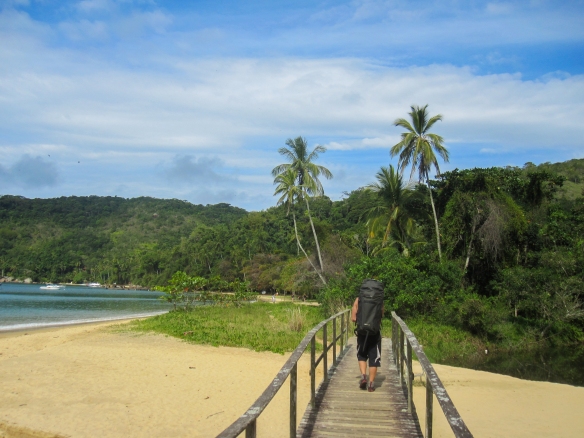 We wandered across a couple of other beach (and up and down a couple more hills) before reaching our destination. The beach was lovely, if a bit busy, as it was an extremely popular destination within reasonable access from town. It’s easy enough to walk down a ways from the crowds, if so desired, as the beach literally just keeps going.
We wandered across a couple of other beach (and up and down a couple more hills) before reaching our destination. The beach was lovely, if a bit busy, as it was an extremely popular destination within reasonable access from town. It’s easy enough to walk down a ways from the crowds, if so desired, as the beach literally just keeps going.
We also found a place to camp. I won’t say where.
We were conveniently located to have the beach almost to ourselves in the morning.
The weather wasn’t looking like it was going to shape up enough for us to want to spend the day on the beach, so we started the hike back early. This was a great call, as the rain started and just kept going (see a pattern with this island?) We passed several miserable-looking people heading off for their beach day, and figured our timing was about as good as it could have been.
By the time we made it back to town we were hungry, cold, and felt like we’d earned something, so we went out for hot chocolate and a great lunch. We paid more for it but, sometimes, it’s just worth it.
We were moving house that afternoon, to Studio Hostel down a small alley off of the ocean-front road. We spent a little while cleaning and reorganising, and then headed out (in the rain) to explore a tiny bit of our area.
Even in the pouring rain, Abraão is charming, with quaint streets and countless artesan shops. Restaurants and bars beckoned with tasty menus and yummy drinks. I liked this place. But, as it goes, the next day we were off. We caught the morning ferry back to Angra. From here, it was a quick ride to the bus terminal (once we found the right bus, after asking several locals), and then a bus to Rio. To the city for the big time.
“Where Else Can We Go?”
We were going to Ilha Grande, an island not to far from Rio de Janeiro. Here there were isolated beaches, endless walking trails and, we were to find out, excellent cake.
To get to Ilha Grande from Buzios is easy enough, it just requires a stop in Rio. One could take one of the almost-hourly 1001 buses from Buzios to Rio, and then transfer to a Costa Verde bus. Costa Verde will take you to any of the three towns that offer boat departures to Buzios: Mangaratiba, Conceição de Jacareí, or Angra dos Reis. The once-a-day public ferry (by far the cheapest option) leaves from Angra. Frequent schooners and lanchas leave from Jacareí and Angra. There are also (more expensive) companies that offer private transfer directly from Rio or Paraty which saves you the figuring. But it’s really pretty simple.
In theory, that is. We aimed for the 10 a.m. bus out of Buzios which was, of course, sold out. We got on the 11 a.m. bus. During busy time, I do recommend buying these tickets from the 1001 office, directly across from the bus station, in advance. We made it to Rio somewhere around 2 p.m., where we were promptly told that the next availability for a bus to our departure port was not until 5:30 p.m. It’s at least a couple of hours on the bus, and to the best of our information we found that the latest boats leave around 6 p.m.
Hmm. Keen to avoid overnighting in some potentially sketchy port town, we evaluated our options. “We could,” I said, “Go somewhere else.” We scanned the list of destinations on Costa Verde’s sign. Angra, Conceição de Jacareí, Paraty. I had a recollection of a lovely picture being painted in my head by a borrowed guidebook, some point in the last few weeks, about the town of Paraty. It was about three hours by bus, and we could still get to Ilha Grande after Paraty, relatively easily, if we stole a day or two from Rio. New plan.
The next available bus still wasn’t until late afternoon, but we managed to reschedule our Ilha Grande accommodation and book a place to stay in Paraty while we hung out at the bus terminal. We arrived reasonably late in Paraty, and were greeted by the excellent host of our hostel, Vibe.
As with most places in Rio state, Paraty is a place that just keeps growing on you.
Tim was lucky enough to get a surfboard on lend for a couple of days (seriously, the hostel was great) so we headed off to Trindade, a surfy beach about 45 minutes by bus from the centre. The buses are easy to navigate: they all leave from a central terminal and the times and destinations are posted. If you don’t notice the postings, like we didn’t, there are plenty of people milling about whom you can ask.
Trindade boasts a long and beautiful beach, with one end mainly dedicated to surfing (with a sheltered cove good for swimming) and the other littered with a pile of beachfront restaurants. The small town is full of a funky smattering of hippy shops and some cool restaurants (though prices are at a bit of a premium down this way).
The next day probably trumped. We’d heard of some waterfalls and natural waterfalls in the area, so after a bit of debating beach day or adventure day, we landed on adventure day. And we’re very glad we did. We headed off to Penha and it’s, again, an easy bus from town. We headed up the quick path from the road and made our way to the rock slide. Luckily we were there with someone who had been before, and he demonstrated the appropriate place to go sliding down the rock into the pool below. You could get up some serious speed on the slick rock, and the water at the base was freezing. Well, here goes.
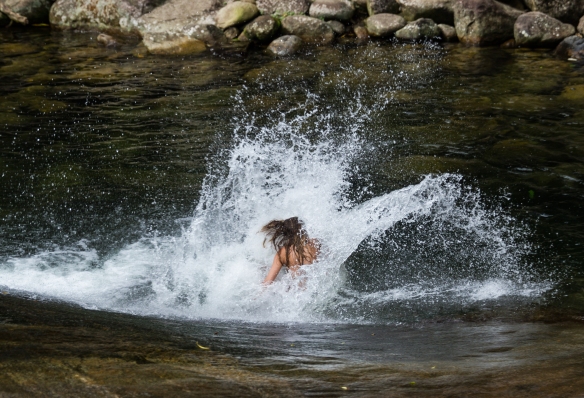 It wasn’t long before we were taking running slides in, or having two people slingshot the third to get going, to maximize speed. There was definitely some air happening. At one point, the group of us were standing at the top of the natural slide, debating whether going down on one’s tummy, headfirst, was wise, when a local kid, maybe ten years old, went flying past us at a run and proceeded to take skate down the entire slide standing up.
It wasn’t long before we were taking running slides in, or having two people slingshot the third to get going, to maximize speed. There was definitely some air happening. At one point, the group of us were standing at the top of the natural slide, debating whether going down on one’s tummy, headfirst, was wise, when a local kid, maybe ten years old, went flying past us at a run and proceeded to take skate down the entire slide standing up.
Now, it’s entirely impossible to communicate the absolute craziness and skill involved in doing this. We have pictures, we have video, and you still don’t get it. I felt out of control going down on my butt, and this kid went down fully upright, catching air, losing, his footing, recovering, and then catapulting into the pool below. We obviously asked him to do it again so we could film it this time.
After the rock slide, we still managed to squeeze in a quick trip to the beach before making our way back to town shortly after nightfall. As we’d heard so much about the lovely historic centre of town, and had yet to see it, we took a quick walk through on our way home.
Paraty’s centre is exceptionally lovely. It’s dotted with mouthwatering restaurants and interesting shops, and is all cobbled together on a pedestrian street that I would never hope to have heels on and try to navigate. I only wish we had a bit more time to explore, but tomorrow it was off. To Ilha Grande. For real this time.
Beaching it in Buzios
We arrived in Rio and promptly left: we were waiting to enjoy the city until the days surrounding the final of the World Cup. We made our way to the beach resort town of Buzios, which has been pegged as Brazil’s St. Tropez. During high season and weekends, the posh come to kick off amongst Buzios’ cobbled streets and massive dance clubs. We were there during neither of these times, and enjoyed our midweek vacation in a pretty relaxed style.
Buzios is one of those places where it is very easy to come for a day or two and casually keep extending your stay, until you at some point find out what day it is and realize that you have stayed for a week.
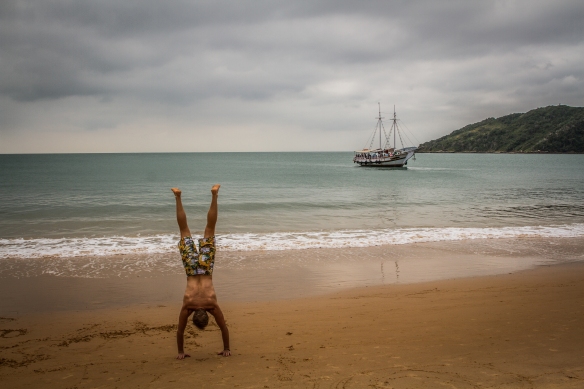 This was even easier for us as we stayed at a great hostel. Lagoon Backpackers is located a short walk from Geriba Beach and a short bus ride from the centre. It is a welcoming and very chilled out hostel and time simply seemed to slip away from us.
This was even easier for us as we stayed at a great hostel. Lagoon Backpackers is located a short walk from Geriba Beach and a short bus ride from the centre. It is a welcoming and very chilled out hostel and time simply seemed to slip away from us.
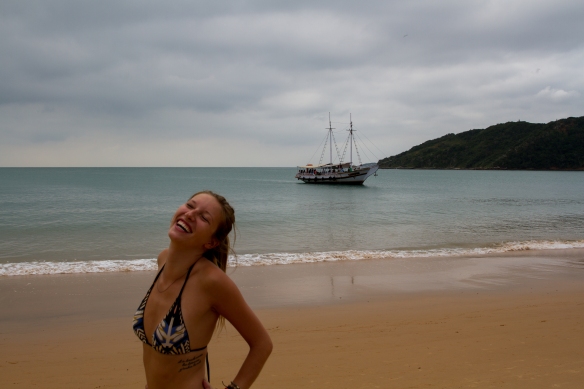 Buzios has a lot on offer: nice restaurants, great bars, a multitude of beaches, surfing, and cheap buggy rentals to make it easy to explore all of it. We hired one of said buggies and proceeded to visit almost every beach along the edge of the peninsula.
Buzios has a lot on offer: nice restaurants, great bars, a multitude of beaches, surfing, and cheap buggy rentals to make it easy to explore all of it. We hired one of said buggies and proceeded to visit almost every beach along the edge of the peninsula.
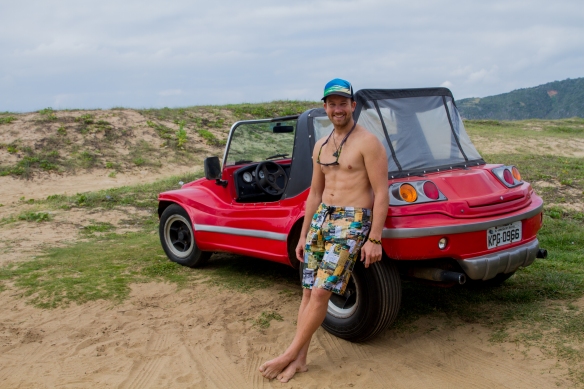 There are more than enough beaches in Buzios to entertain you for days. We visited Praia da Tartaruga, which is one of the more developed, offering a string of beachside restaurants and bars. After some lounging on the far end of the sand, we caught the first half of the Argentina vs. Switzerland game, accompanied by a group of Chileans who (as appeared to be keeping in South American style) were supporting Switzerland for the sole reason that they wanted Argentina to lose.
There are more than enough beaches in Buzios to entertain you for days. We visited Praia da Tartaruga, which is one of the more developed, offering a string of beachside restaurants and bars. After some lounging on the far end of the sand, we caught the first half of the Argentina vs. Switzerland game, accompanied by a group of Chileans who (as appeared to be keeping in South American style) were supporting Switzerland for the sole reason that they wanted Argentina to lose.
After a couple of Antarctica beer, we carried on our way. We circled near the tip of the peninsula, where the peaks of hills offered amazing views of sheltered bays, sailboats, rocky coastline, and the beautiful blue ocean stretching into the distance. Perhaps our favourite beach was Brava, where we found not only a great surf shop but s small, beautiful beach with more than enough waves to play in. As the sun was on its way down, we hesitated to linger too long, as there were more places to explore on our way home.
The next day, with a crew from the hostel, we went to Arraial do Cabo, ready to explore what was promised to be some of the most beautiful beaches in Brazil. From Buzios, you can take a bus directly to Arraial do Cabo or, more frequently, take one bus to Cabo Frio and another to the final destination. The trip will take about an hour, maybe more. Once you get deposited in Arraial, there will be no shortage of beachfront touts attempting to sell you a tour to visit the surrounding beaches and sites. We were with someone who had been to the area before and, in his opinion, the four-hour tour wasn’t worth it. There were only two beaches worth visiting: Prainhas and Farol. The tour generally takes you to four sites, and prices start at R$50. When I say start, I mean that 50 reals is the price you will be initially quoted, and it is up to you to negotiate it down from there.
Farol is only accessible by boat, but Prainhas can be reached by either water or land. In theory it is possible to walk to the beach from Arraial, but I would estimate it would be at least an hour over a very large hill. Taxis are an option, but are rather few and far between in town, and we never had the opportunity to ask one for a price. We were mainly shopping for a boat to take us there and bring us back, but as their main business is tours, this proved to a bit of a mission. We finally found a boat that would take the six of us over for R$100 (about $50) and bring us back a few hours later. It turned out in our favour that a Chilean family had been sold on the same boat, but they were after the tour. We were lucky enough to get to tag along on their trip.
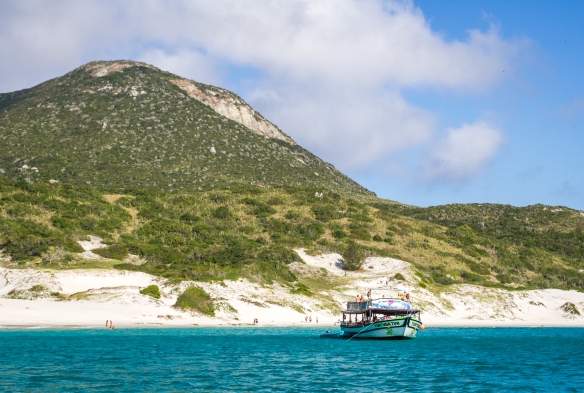 The first stop was the famed Farol, a beach of pristine white sand reminiscent, to me, of those found in Queensland, Australia. The water was stunning, fading from a shallow green to a stunning azure. The temperature was by no means tropical, and the swim to shore from the boat certainly woke up the senses. We had a couple dips, went for a walk along the gorgeous sand, and were back in the water when Tim saw it.
The first stop was the famed Farol, a beach of pristine white sand reminiscent, to me, of those found in Queensland, Australia. The water was stunning, fading from a shallow green to a stunning azure. The temperature was by no means tropical, and the swim to shore from the boat certainly woke up the senses. We had a couple dips, went for a walk along the gorgeous sand, and were back in the water when Tim saw it.
A whale had made it’s way through the channel from open sea, into the sort of bay these beaches frame. He saw a spout of water shoot into the air, and within a few minutes a couple of boats had gathered around the area. He got everyone moving as quickly as he could, and it wasn’t too long before we were back in the boat, shooting off in the direction of the whales.
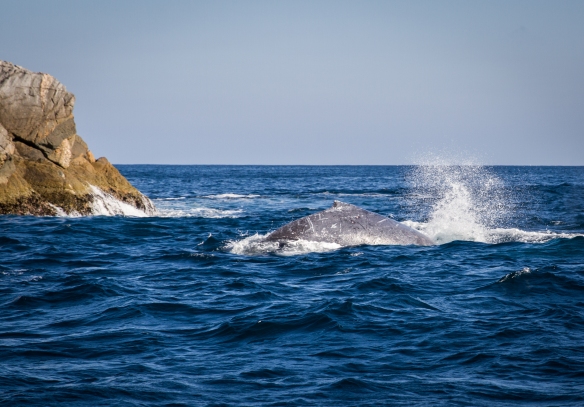 There were two. Humpbacks. A mother and her calf, and we had the good fortune to hang out alongside them for at least ten minutes. We followed them out to the open sea through the rocky channel between the beaches, and then they were gone.
There were two. Humpbacks. A mother and her calf, and we had the good fortune to hang out alongside them for at least ten minutes. We followed them out to the open sea through the rocky channel between the beaches, and then they were gone.
After a quick tour of some of the beautiful rock formations along the other side of the island, we headed to Prainhas, our second beach. In the shelter of the huge hill that one would have to walk over if there wanted to make it here on foot, we had a limited amount of sun left, and kept relocating our circle of sarongs to chase it. This is certainly a morning beach. Almost as stunning as Farol, opposite, we lounged on the chalk-white sand until it was time to go home.
![The Wander World [Travel Blog]](https://thewanderworld.files.wordpress.com/2012/10/cropped-waderworldheader1.jpg)
